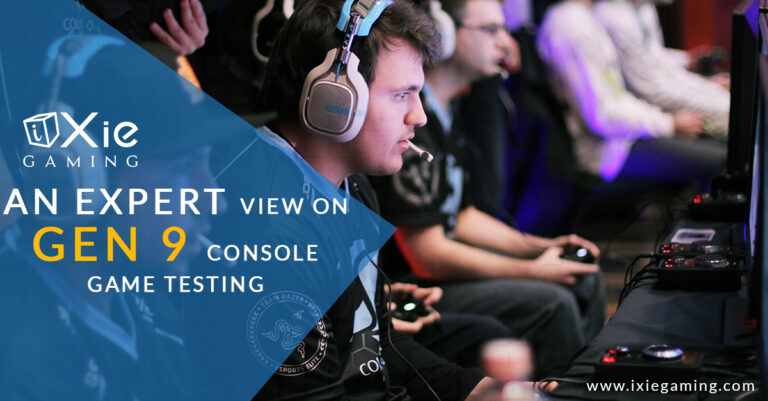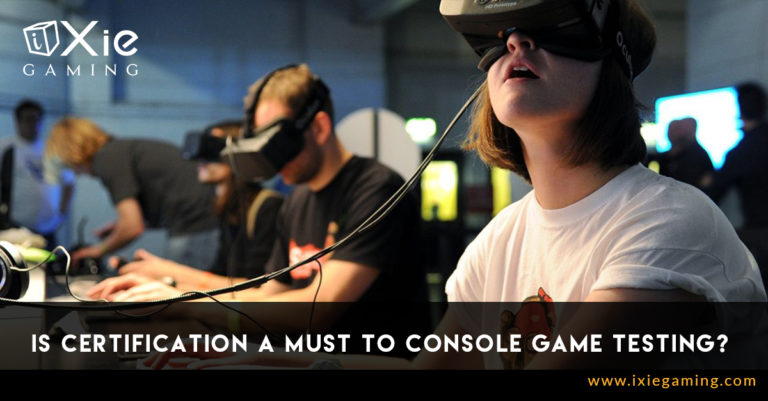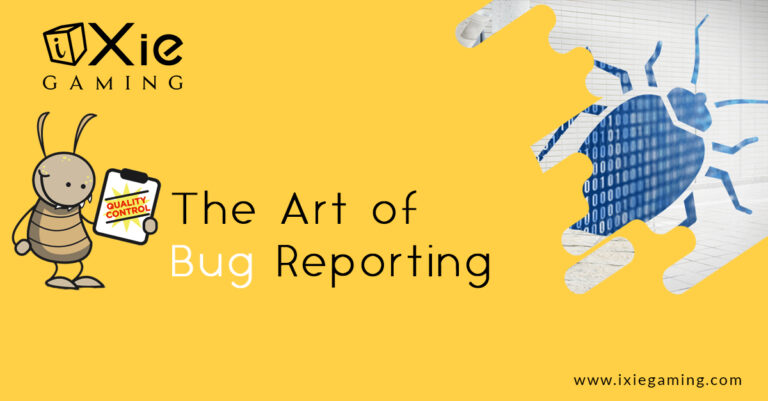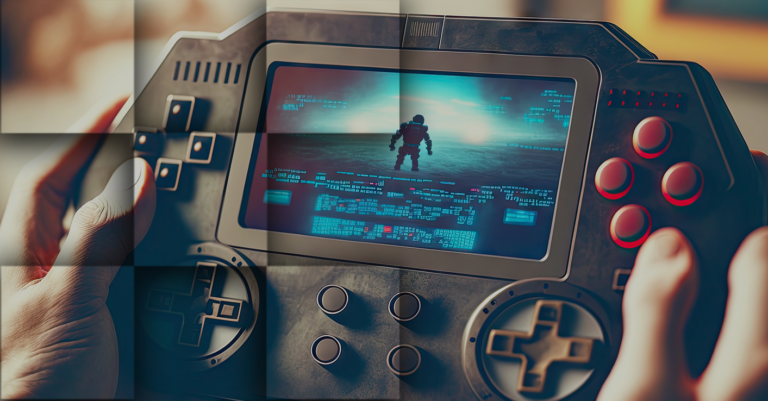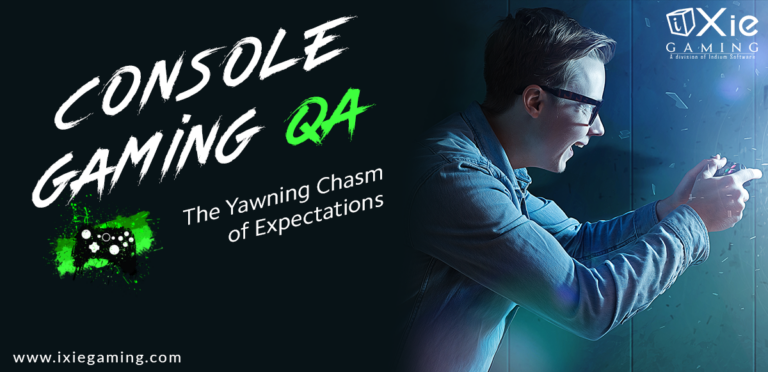Testing is crucial in game development because even a small bug can lead to negative reviews, lost sales, and a damaged reputation. At iXie, we know the importance of thorough testing. We’ve built expert QA teams and developed our own tools to handle game testing challenges effectively. Our careful, multi-stage approach ensures that every game we test is polished and seamless, providing a great experience for players.
This guide will explain iXie’s proven testing methods, sharing the strategies that make us a trusted partner for game developers. Whether you’re experienced or new to the industry, our goal is to give you the knowledge and insights to improve your game’s quality.
We’ll explore each testing phase, from pre-production to post-launch, and show how iXie’s approach is setting a new standard for game QA. Join us to learn how to navigate game testing complexities and enhance your games.

Stage 1: Pre-Production Testing
While the excitement of making a game usually happens in the later stages, the pre-production phase is very important for the whole project’s success. This early stage helps us spot and fix problems before they become big issues, saving time and resources later.
Concept and Design Reviews
Before we start coding, it’s important to review the concept and design carefully. Our experienced testers work closely with game designers and developers to examine every part of the game’s concept, mechanics, and user interface. By identifying design flaws and inconsistencies early on, we can prevent them from becoming bigger issues during development.
Risk Assessment
We take a proactive approach to game testing. Our risk assessment process identifies potential problems based on the game’s complexity, target audience, and platform requirements. By prioritizing these risks, we can use our testing resources effectively and focus on the areas that are most likely to affect the player experience.
Test Plan Creation
A good test plan is essential for our quality assurance (QA) strategy. This detailed document explains what we will test, our goals, and how we will do the testing. It includes specific test cases, timelines, and plans for using resources. By making a test plan that fits each game’s unique needs, we make sure our testing is organized and effective.
With this strong plan in place during the pre-production phase, we can move confidently to the next testing stages, knowing we have prepared well to deliver a high-quality and polished gaming experience.
Stage 2: Alpha Testing
As the game develops, alpha testing becomes a crucial stage where our QA team carefully examines the main parts of gameplay. This thorough process ensures the game works as planned and provides a smooth and enjoyable experience.
Core Functionality Testing
Alpha testing focuses on the core features of the game. We carefully check the main functions, controls, and systems. Our aim is to ensure the game runs smoothly without any major bugs or crashes. We thoroughly test everything, including character movement, combat, inventory management, and quest progression.
Smoke Testing
Before starting alpha testing, we do smoke testing. This quick check makes sure the game is stable enough for more testing. It helps us find and fix major problems early, so we can keep the alpha process smooth.
Feature-Complete Testing
Once the game is finished with all its features, we start checking each feature carefully. We test everything, including character customization, skill trees, multiplayer interactions, and endgame content. Our goal is to make sure all features work as they should and fit well into the overall gameplay experience.
Content Testing
While how a game works is very important, a great gaming experience is more than just its mechanics and systems. Content testing looks at the artistic parts of the game, like dialogue, art, music, and sound effects. We make sure the content is not only error-free but also engaging, consistent, and fits well with the game’s overall vision.
By the end of alpha testing, we have found and fixed many of the game’s problems. This results in a polished, playable version that’s ready for the next step – beta testing.
Stage 3: Beta Testing
During the alpha stage, the main mechanics of the game were improved. Now, in the beta stage, real players get to try the game. This time is very important for collecting feedback, finding hidden problems, and making sure the game is ready for everyone.
Closed Beta
Our beta testing journey starts with a closed beta phase. In this phase, we invite a small group of dedicated players to try out the game. This focused environment helps us collect specific feedback from different types of players, finding bugs, balance issues, and usability problems that we might have missed earlier.
Open Beta
As the beta moves forward, we allow more people to join in and play. The open beta phase is important because it lets us see how the game works with different playstyles, types of hardware, and network conditions. We gather useful feedback from players through surveys, forums, and social media. This helps us understand the player experience better and find areas that need improvement.
Stress Testing
We don’t just focus on how the game works and player feedback; we also thoroughly test the game’s limits. We simulate extreme situations to find potential crashes, memory leaks, and slowdowns. By finding and fixing these problems, we make sure the game stays stable and runs smoothly, even under the toughest conditions.
Load Testing
In the final part of beta testing, we do load testing to see how the game performs when many players are online at the same time. We simulate hundreds or even thousands of players interacting together to check the game’s responsiveness, server stability, and network infrastructure. Load testing gives us important insights into how well the game can handle lots of players, making sure everyone has a smooth and fun experience when the game is released.
By the end of beta testing, the game has been thoroughly checked from both technical and player perspectives. We’ve collected valuable feedback, fixed many issues, and optimized the game for a larger audience. The game is now ready for the final testing stages, where it will be carefully reviewed before its big launch.
Stage 4: Gold Master (GM) Testing
As the launch date gets closer, the game moves into the Gold Master (GM) testing phase, which is the last stage before release. This is an important time where we check everything carefully to make sure the game is perfect.
Final Bug Verification
With most of the testing done earlier, GM testing checks that all known bugs are fixed. Our QA team carefully goes through the game again, re-testing important parts and making sure no new problems have appeared in the final stages of development. We focus especially on areas that have often had issues, making sure everything is perfect.
Compliance Testing
We not only perform internal quality checks but also conduct compliance testing to make sure the game meets the standards of different platforms and regulatory bodies. We check that the game follows age ratings, content guidelines, and technical specifications. This step is essential to ensure a smooth release and to avoid any legal or distribution problems.
Localization Testing
For games aiming for a global audience, localization testing is crucial. We carefully check the translated versions of the game to make sure the dialogue, menus, and instructions are accurate, culturally suitable, and error-free. We also test the game in different regional settings to ensure a smooth experience for players everywhere.
By the end of GM testing, the game is in its final, polished form. This stage is the result of many hours of testing, refining, and optimizing. We believe the game is ready to be released, but our work isn’t finished. Post-launch testing continues to keep the game enjoyable and free of bugs for years to come.

Stage 5: Post-Launch Testing
While the game’s launch is a big step, we will keep working on its quality. We will continue testing the game after launch to make sure it stays stable, fun, and free of problems.
Live Environment Monitoring
After players worldwide start playing the game, we keep a close watch on how it performs. We gather and study player data, looking for crashes, errors, and performance details. This real-time feedback helps us quickly find and fix any problems, making sure all players have a smooth and enjoyable experience.
Update and Patch Testing
As the game gets new content, features, and bug fixes, testing updates and patches becomes very important. Each update is carefully tested to make sure it doesn’t bring new bugs or mess up things that were already fixed. We also check how the update works with different hardware and operating systems to ensure a smooth experience on all platforms.
Regression Testing
Even after thorough testing before, old bugs can still come back. Regression testing means checking parts of the game that were tested before to make sure new updates or patches haven’t caused problems. This ongoing process helps us keep the game quality high and stops old issues from bothering players.
At iXie, we believe post-launch testing is a key part of game development. By always monitoring, updating, and improving our games, we show our commitment to giving players a great gaming experience worldwide.
Conclusion
At iXie, we don’t just talk about quality – we live it in every step of making our games. From the first brainstorming ideas to supporting the game after it’s launched, we make sure everything is top-notch.
We want to know your thoughts! Do you have a favorite part of testing, or a memorable moment when you fixed a tricky bug? Share your stories in the comments below!
Testing is not just about finding mistakes; it’s about perfecting our vision, making the player’s experience better, and creating games that bring joy and excitement. This dedication drives our careful approach to game quality assurance, and we invite you to join us in this exciting process.
Thank you for exploring the world of partnering with iXie. We hope you found it useful and inspiring. Now, let’s hear from you – your opinion matters!
Frequently Asked Question:
The major stages of game testing are:
- Pre-Production Testing
- Alpha Testing
- Beta Testing
- Gold Master (GM) Testing
- Post-Launch Testing
Pre-production testing is crucial because it helps identify and address potential issues early in the development process. This phase includes concept and design reviews, risk assessment, and test plan creation to ensure a solid foundation for the rest of the project.
Alpha testing is an early testing phase where the core functionality of the game is examined. This stage focuses on core functionality testing, smoke testing, feature-complete testing, and content testing to ensure the game runs smoothly and is free of major bugs.
During beta testing, the game is tested by real players. This stage includes closed beta (with a select group of players), open beta (with a larger audience), stress testing, and load testing to gather feedback, find hidden issues, and ensure the game can handle high player loads.
Gold Master (GM) testing is the final testing phase before the game’s release. It involves final bug verification, compliance testing, and localization testing to ensure the game is polished, meets platform standards, and is ready for a global audience.

